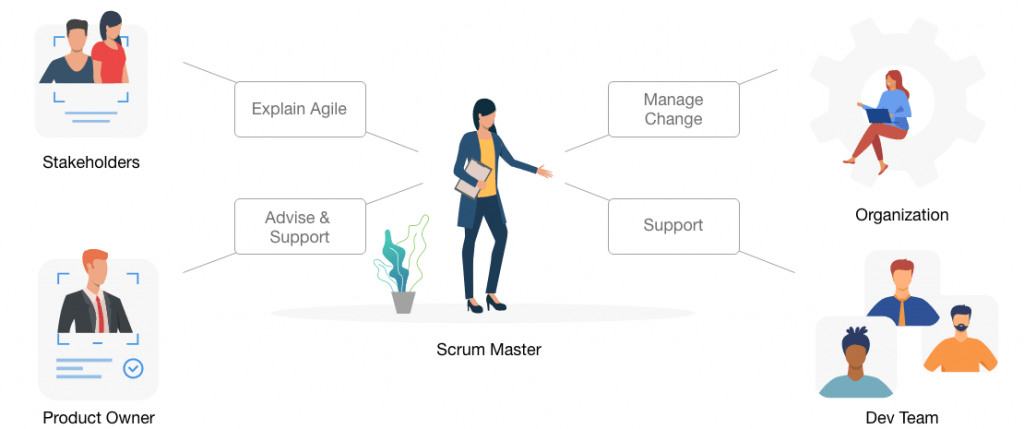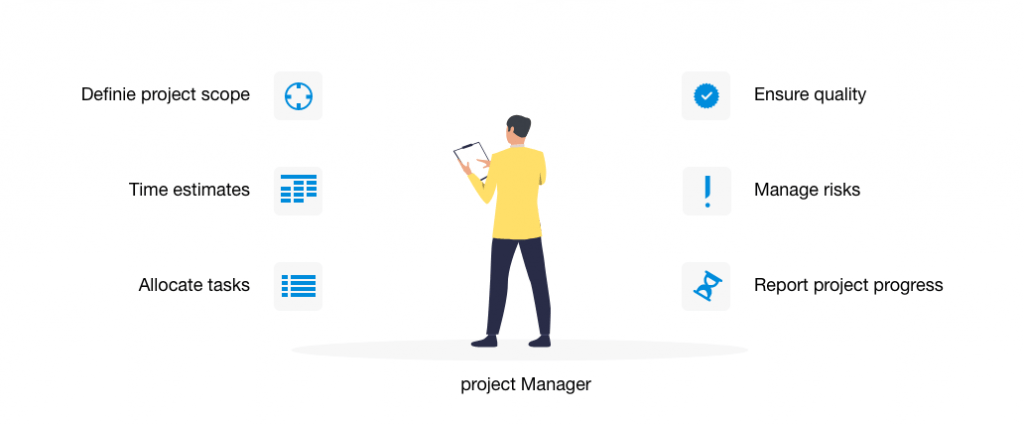

Attrecto team
Scrum master vs project manager? A high-level guide for making the right decision.
- ,
- , SCRUM Management
The Manager and the Master: Choosing Between A Scrum Master and Project Manager
If you’re transitioning from a waterfall to an Agile model of software development, you might be wondering about the roles of scrum master vs project manager.
What’s the difference between the two roles, and aren’t they basically the same thing? Isn’t a scrum master just an Agile project manager? In short: No, they’re not the same, and it’s essential to be clear what the responsibilities of each position are in project management.
While there are many similarities between the role of project manager and scrum master, the differences are more than just semantics.
You can’t employ one person to act as both scrum master and project manager. Similarly, if you’re moving from a waterfall development method to Agile, don’t just rename your project manager as “scrum master.” Adopting an Agile methodology is about much more than just changing the language you use.
Agile project management is quickly becoming the industry standard for good reason. But some web and app development companies are adopting Agile practices without having a sound understanding of the 12 Agile software development principles.
Likewise, the term “scrum master” has become somewhat of a buzzword, and more and more teams are employing one. But having a scrum master doesn’t necessarily negate the need for a project manager.

What Does a Scrum Master Do?
The scrum master sits between the development team and the customer’s requirements, supporting the product owner, and coaching the team.
Rather than acting as manager, the scrum master’s role is more facilitator. They act as “supports”, guides, observers, and protector and nurturer of ideas and processes within the scrum.
The scrum master is a servant leader for the scrum team, meaning that they focus on the needs of the team so they can serve the customer better.
The scrum master is not involved in decision-making, and so their role is narrower than that of the project manager. The scrum master is responsible for:
- Making sure all members of the project team understand the scope and goals of the project.
- Helping them to organize themselves and work together to get their jobs done as efficiently as possible
- Helping to remove obstacles that are slowing the team down, such as slow or unnecessary approval or processes and outdated hardware.
- Handling development tasks as requirements change.
- Relaying information about development status and progress to the project stakeholders.
- Supporting and guiding the product owner (who may also be the project manager) and working together to design product backlog items for the next sprint.
- Facilitating the daily scrum meeting.
- Promoting and supporting the scrum framework as defined in the scrum guide and helping everyone to understand and follow scrum implementation, theory, practices, rules, and values.

What Does a Project Manager Do?
The project manager’s role, on the other hand, is to communicate directly with the customers, allocate tasks to the development team, and make decisions that affect the project.
Some of the key responsibilities of the project manager include:
- Understanding the project scope and creating the project plan.
- To manage the work, budget, resources, and project timeline.
- Allocating tasks to team members and ensuring they get done in the allotted time.
- Reporting to stakeholders and leadership on the state and progress of the project.
- Communicating and coordinating with multiple development teams.
- Managing and mitigating risks.
- Managing the relationship between the customer and the stakeholders.
- Ensuring the quality of the final project and that it meets the customer requirements.

Scrum Master Vs Project Manager - Which one do you need?
Project manager and scrum master are both important roles. But how do you decide which of these positions you need to hire for?
You need a scrum master if:
- You already have a product owner in-house, and you want to break down the development into smaller tasks.
- You are using an Agile methodology exclusively.
- Your developers can self-organize and work without strong supervision.
You need a project manager if:
- You want to give decision-making authority to a designated person.
- You are using a mixed methodology or using Agile practices in waterfall projects.
- You need someone who can maintain your backlog, task list, and administration.
In summary, the two roles have fundamentally different focuses and viewpoints. To attempt to cross or merge the roles would produce a conflict of interest.
The project manager’s focus is on the project and making it a success, whereas the scrum master’s priority is the team and ensuring their success.
Ultimately, the project manager answers to the customer and must prioritize their needs along with the interests of the development company or organization as a whole.
The scrum master, on the other hand, is responsible for encouraging, supporting, and enabling the team to produce the best product they can, shielding them from disturbances and threats. This includes any disturbances from the customer or other project stakeholders.
Our approach:
Regardless if it is a Scrum Master or a Project Manager who guides you through the project, here at Attrecto we always provide the most relevant support to our clients. Throughout the last decade we always kept up with the market changes and adopted the latest (proven) trends to best meet the business needs and requirements of our clients. That is why besides a waterfall approach, where the team is led by a PM, we also provide agile methodology (already since 2012), with seasoned Scrum Masters.
As at the “first step” at the very beginning of each project, we have a consultation phase, when we perform deep client interviews, with the purpose of finding out the most about the client’s business needs , the project’s complexity and the underlying tech-stack (if already available).
After we get a more comprehensive and accurate assessment, we can decide which approach best fits for the client and the project.
Generally, we go on with an Agile methodology when the requirements are not “set in stone” by the customer. In this methodology, clients may even ask for changes in the requirements during the development process. With this strategy and the comfort of the Scrum Master’s (SM) experience, we can:
– break down the processes into smaller parts
– respond promptly to the needs of any changes
– and provide faster review cycles, so the client is always up-to-date in terms of the status of the development.
With the guidance of the SM, the developer team can focus on its primary goal, which is to create an outstanding product.
The classic Waterfall methodology comes into play at Attrecto when customers have their exact specifications ready (and have no intention to change them later). After we agree on the terms of the engagement, the project kickoff is already set up by the designated PM, who also remains the point of contact to the product owner of the client. In this case it is our PM who makes sure the delivery team works well together and there is no communication barrier between us and the client.
Summing, when you have clearly defined roles and assign them appropriately, every individual in the organization can work efficiently and achieve their highest potential, depending on their individual skills. This results in a more productive team, better communication at all levels, and ultimately a better product – and a happy client.
Download your free guide for development process in UX driven projects

